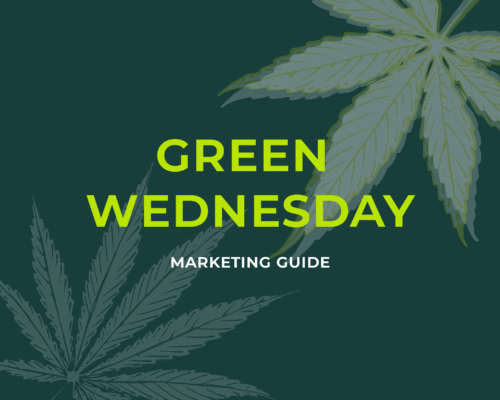The Most Trusted California Cannabis POS Software for Dispensaries
If you operate a cannabis dispensary in California, you already know the challenges: tight regulations, evolving compliance rules, and intense market competition. That’s where IndicaOnline comes in.
As the most trusted provider of a California dispensary POS system, IndicaOnline offers a full-featured, compliance-ready point of sale solution tailored for retailers across the Golden State. Whether you’re running a single retail storefront, overseeing multi-location operations, or scaling a cannabis delivery service, our platform helps you streamline workflows, stay compliant, and grow with confidence.
With over a decade of experience in the cannabis industry, we understand the unique needs of cannabis retail in California, and we’ve built the tools to help you succeed.
Why Cannabis Dispensaries in California Need Specialized Point of Sale Software
The cannabis industry in California is highly regulated and constantly evolving. Running a compliant, efficient cannabis business demands a California-specific cannabis POS system designed to meet the unique demands of cannabis retail.
IndicaOnline’s point of sale software helps dispensaries stay ahead of regulations through:
- Built-in age verification and ID scanner tools to ensure only legal sales are processed.
- Real-time reporting and automated syncing with METRC for full seed-to-sale transparency.
- Product tracking, batch management, and transaction limits to stay within state compliance guidelines.
With tight oversight at both state and local levels, using cannabis POS software built for California helps dispensaries remain audit-ready, compliant, and protected from costly violations.
Features Tailored for Cannabis Retail in California
IndicaOnline’s point of sale software for cannabis retailers in California is built to power every part of your retail operations, from inventory to compliance and everything in between. It delivers the tools you need to grow efficiently, stay compliant, and manage across multiple locations.
Here’s how it supports day-to-day success:
- Inventory management in real time. Track every unit of your cannabis products with auto-updates, low-stock alerts, and multi-location syncing.
- Sales and tax reporting. Align your data with California’s cannabis tax requirements while reducing manual work.
- Full METRC integration. Sync your inventory and transaction data directly to METRC to ensure constant state-level compliance.
- Centralized dashboard. Manage all aspects of your cannabis business, such as products, staff, and reports, from one secure platform.
Whether you operate one store or a multi-location dispensary brand, IndicaOnline cannabis POS gives you control, visibility, and peace of mind.
How IndicaOnline Enhances Customer Experience
In California’s competitive cannabis retail market, creating a smooth, personalized, and reliable shopping experience is essential. IndicaOnline’s dispensary POS system helps you serve customers faster, build loyalty, and increase retention.
Key benefits for improving the customer experience include:
- Faster checkout. Speed up lines with barcode scanning, mobile point of sale POS devices, and integrated payment processing.
- Customer profiles and preferences. Store purchase history, medical needs, and preferences to personalize recommendations.
- Built-in loyalty programs. Reward repeat customers automatically and drive long-term engagement.
- Curbside pickup and delivery management. Manage online orders, pickups, and statewide deliveries with real-time order tracking.
By combining efficiency with personalization, IndicaOnline POS empowers cannabis dispensaries in California to deliver service that keeps customers coming back, while maintaining full compliance.
Built for Business Owners and General Managers
Whether you’re a business owner or general manager, IndicaOnline point of sale system helps make running your cannabis business a lot easier. From staffing and compliance to sales and inventory, everything you need is in one secure, easy-to-use platform.
Features for Operators:
- Employee Management: Create roles, set permissions, and track employee performance across all locations.
- Automated Alerts and Tasks: Automate time-consuming functions like compliance notifications, inventory management, and tax reporting.
- Custom Dashboards: Monitor key performance metrics and identify trends to guide decision-making.
- Scalable for Growth: Whether you’re managing one location or a multi-location brand, IndicaOnline scales with you.
This all-in-one platform allows operators to stay focused on driving profitability and efficiency without getting buried in day-to-day logistics.
California-Based Support and Compliance Expertise
With constantly changing California cannabis regulations, having a partner who understands local compliance is important. IndicaOnline offers California-based support and ongoing updates to ensure you remain aligned with state and local laws.
Why It Matters:
- Local Support Teams: Get expert guidance from people who understand the nuances of California cannabis compliance.
- Dedicated Updates: Stay current with automatic updates that reflect changes in taxes, METRC, and purchase limits.
- Seamless Implementation: Whether you’re migrating from another cannabis POS software or starting from scratch, our team ensures a smooth onboarding experience.
In an industry where compliance issues can shut down operations, having local support and a reliable point of sale system gives you peace of mind.
See Why California Cannabis Businesses Choose IndicaOnline
If you’re looking for a cannabis POS system that delivers clear ROI, simplifies retail operations, and keeps your dispensary compliant with California law, IndicaOnline is the solution.
Take control of your cannabis business with a proven California dispensary POS system built for the realities of running a licensed retail operation.





















